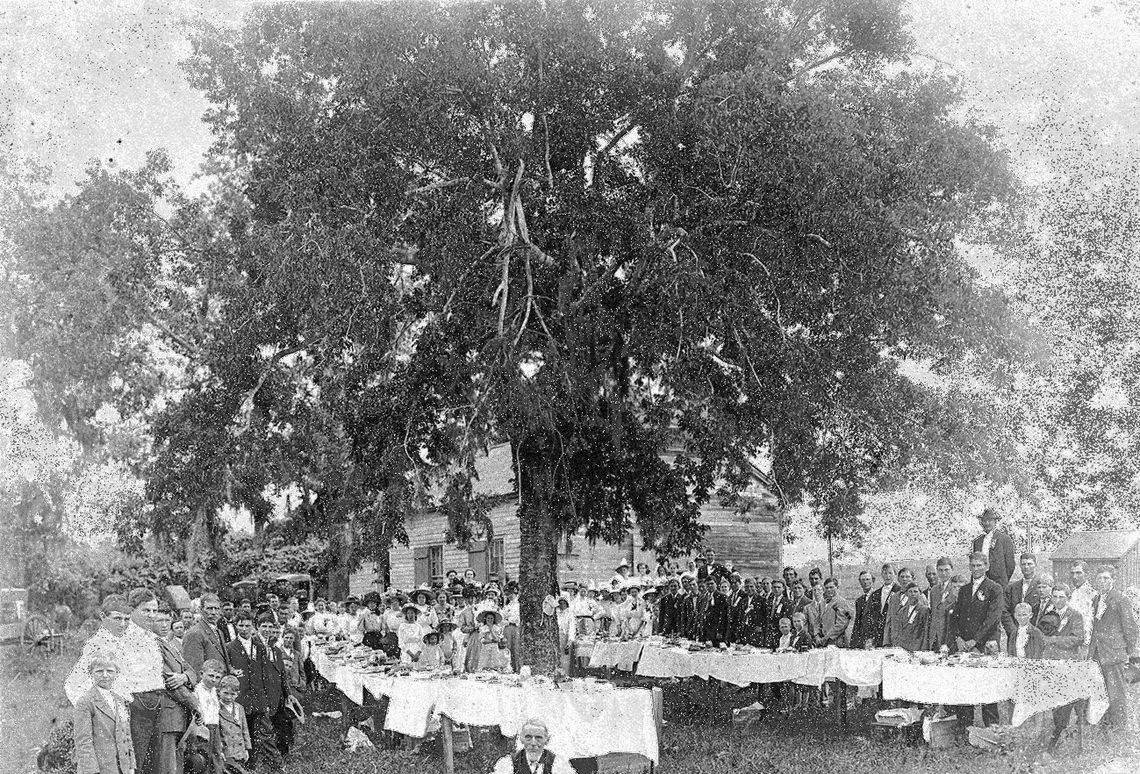Osage was once a bustling community with schools, churches, and businesses, but today the Osage Community Cemetery with its 200 graves is the sole reminder of those days long ago. The cemetery was recorded by the Texas State Historical Commission as a Historic Texas Cemetery in 2016 and a historical marker was placed at its entrance in 2018.
The cemetery is under the care of the Osage Community Cemetery Association, incorporated in 2006. Due to the heat, the group will hold its annual meeting at 10 a.m. on Thursday morning, July 18th in the meeting room of the Nesbitt Memorial Library in Columbus. There are no dues, and anyone interested is welcome to attend.
The cemetery is 4.5 miles northeast of Weimar at the junction of county roads 205 and 208 and covers about 1.25 acres. The Osage area has an unusual history in that it lies in the Henry Austin Hacienda (or 5-league survey) which spanned both Colorado and Fayette Counties and was intact until Austin’s death in 1852. The following year, his son Edward subdivided those five leagues into 55 tracts and this subdivision coincided with an influx of settlers from the southern states.
These new settlers were primarily Protestants from Tennessee and Alabama and Osage soon became well known for its camp meetings, the first of which was probably held in 1863. Camp meetings, which were outdoor multi-denominational worship services conducted by traveling ministers and evangelists, had a long history in frontier America. People from near and far came to camp, enjoy the fellowship of other attendees and to renew their faith through several days of services held throughout the day and into the evening. These annual events continued through the early 1900s.
Dr. Samuel McLeary is credited with naming the area Osage because of the numerous Osage Orange trees in the area. The Confederate government established a post office with McLeary as postmaster in 1862. In 1869, W. L. Adkins formally platted and laid out Osage. However, four years later, the Galveston, Harrisburg and San Antonio Railroad began laying tracks from Columbus to San Antonio. The development of Weimar along the tracks kept Osage from becoming more than a scattered community of farms as its businesses and, eventually, its churches moved into Weimar.
The oldest tombstone in the Osage Cemetery is a false crypt that dates to 1860 when Dr. McLeary’s brother, Gideon, died after a brief illness. Although it is still an active cemetery, more than half of the burials took place during a thirty-year period between 1880 and 1910. The Osage Community Cemetery Association, Inc. is proud of its efforts caring for the cemetery and also remembering the history of the Osage community.
Please contact the association’s historian, Rox Ann Johnson, at 512-9254804 or [email protected] if you would like to know more about the cemetery association or the history of the Osage community.
.jpg)

